We Supply Solutions
Stamping
We manufacture metal parts for platforms and sub-assemblies: all pieces are available in rolled steel sheet or aluminium.
Our stamping section has eccentric and hydraulic machinery for primary and secondary operations, of which we can highlight our line of presses of up to 1,000 ton Transfer.
Presses equipped with CNC feeders for progressive and automatic feeding.
We have specific machinery for the insertion of screws and nuts in the press, with die threading and nut insertion systems by integrated self-drilling.
Poka-Yoke systems in our stamping processes guarantee the quality of our parts.
Die-Stamping
Conventional, progressive and transfer dies for large productions and large tonnages.
We apply component insertion technologies (nuts and bolts), threading and die clinching in our dies.
Prototypes and pre-series
- Bending, stamping, laser cutting, 2D and 3D laser measurement.
- Manufacturing methods with very short delivery deadlines.
- Adaptable models.
SINGELTOOLS
- Temporary methods with definitive cut.
- Guaranteed production of 5,000 pieces.
- Short engineering times.
- Adaptable models.
Welding
Our welding area has more than 20 robots and more than 40 universal resistance welding presses equipped with automatic component feeding, dividing plates and poka-yoke systems that constantly guarantee the quality of the manufactured products.
We have flexible cells for large productions.
Metallic Coatings
We apply treatments consisting of barrel and rack zinc plating, zinc-nickel, standard and high thickness cataphoresis, zinc + cataphoresis, zinc-nickel + cataphoresis, shot blasting, degreasing and vibration.

Barrel and rack Zinc treatment
Finished: Silver and yellow iridescent – The galvanizing process consists of a cathodic electrodeposition of metal zinc on steel metal parts. Usual deposit thickness varies between 8 µm and 20 µm. Types of finish depend on the passivation type applied: White, iridescent of high thickness White (oxide of Zinc) corrosion resistance also depends on the passivation type, and varies between 48 hours for white passivation, up to 300 hours of exposure to salt fog in high thickness iridescent passivation (NSS) according to DIN EN ISO 9227.

Zinc-Níquel
Zinc-Nickel Transparent, blue or black finish but sealed (optional) – The zinc – nickel plating process consists of a cathodic electrodeposit of zinc and nickel on steel metal parts. The proportion of metal alloy nickel ranges between 12% and 16%. Usual deposit thickness varies between 8 µm and 20 µm. The types of finish color depend on the type of passivation applied: gray, silver, iridescent blue or black. Resistance to white corrosion (zinc oxide) depends on the type of passivation, if any, or if not, an additional seal, varying between 144 hours for only passivated parts and up to 240 hours of exposure of sealed and passivated parts to salt fog. The corrosion resistance of the base material (red corrosion ) in general is 720 hours and with passivated and sealed parts it can reach 1,200 hours of salt fog (NSS) according to DIN EN ISO 9227.

Standard and high-thickness cataphoresis layer
Black finish – The cataphoresis painting process consists of a cathodic electrodeposit of epoxy paint on steel metal parts. Previously, the parts must have been degreased and phosphated with a phosphate, microcrystalline tricationic zinc, nickel and manganese. The usual deposit thickness varies between 15 µm and 30 µm, although thicknesses of up to 60 µm are possible. The finish color is black matte (RAL9005). Resistance to the corrosion of the salt mist (NSS) according to DIN in ISO 9227 is about 800 hours without corrosion of the base material. Respect to the resistance of cyclic corrosion tests, supports up to 30 cycles of corrosion according to the standard VW PV1210 parts of high thickness (30 µm – 60 µm) up to 60 cycles.

Zinc + Cathaphoresis
Black finish – The process of applying zinc + paint by cataphoresis consists in cathodic electrodeposit of zinc on steel parts without applying any later passivation. Usual deposit thickness varies between 8 µm and 14 µm. Once the parts have been galvanized, a coat of paint is applied by cataphoresis as described, with a thickness of 15 µm to 30 µm. This duplex coating supports 30 cycles of corrosion according to the standard PV1210 of VW. This process is widespread in the automobile sector, as well as pre-coated painted parts and components, galvanized and electrogalvanized.

Zinc -Níquel + Cathaphoresis
Black finish – The zinc-nickel + painting process by cataphoresis consists of cathodic electrodeposit of zinc and nickel on the steel metal parts with a proportion of nickel of 12% to 16%. Usual deposit thickness varies between 8 µm and 20 µm. Once the zinc-nickel parts are coated, a layer of paint, with a thickness of 15 µm to 30 µm is applied for cataphoresis. This duplex coating supports 60 cycles of corrosion according to the standard PV1210 of VW. Recently, this coating has become widespread in the automotive industry due to its high resistance to corrosion.

Shot-blasting
Blasting is the projection of steel microshot on metal to clean or polish the surface parts and/or components. The microshot is projected up the parts or components through special turbines in a chamber destined for this use.

Degreasing
The degreasing consists in a treatment chemical with alkaline and surfactant degreasing products to remove oils and/or fat of the surface of the metal parts or components. This process operates on a drum processing line.

Vibration
Vibration consists of a treatment by erosion of metal parts and/or components to remove burrs from the contour and other surface imperfections. The process takes place in a circular drum subjected to vibration, in which abrasive stones are in contact with the parts. The effect of the vibratory motion of the stones on parts or components is that it allows deburring and polishing them. To this process are added water, surfactant detergents, anticorrosive, antioxidant products to prevent further oxidation of parts.
Assembly
Quality assurance systems, poka-yoke, artificial vision and electronic process control.
We highlight the assembly of:
- Components for electric windows.
- Rails.
- ABS and EDS supports.
- Sensor supports.
- Bonnet actuators.
- Platform components.
Engineering
- R&D
- Project engineering
- Process engineering
- Product engineering
- Quality engineering
Engineering R&D
R&D develops new projects: the Know-How of the company.
Projects
Our professionals follow-up our projects in conjunction with advanced planning.
Processes
Continuous improvement is the standard applied in all the applied production processes.
Product
The design and development of the product together with our clients.
Quality
The cornerstone of our architecture, which guarantees products of the highest standard.
